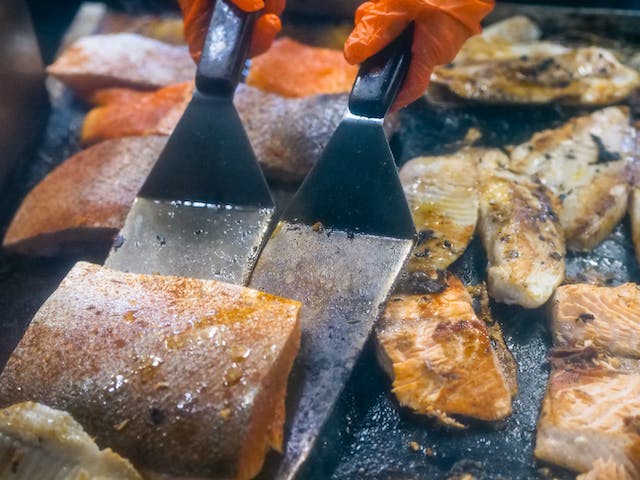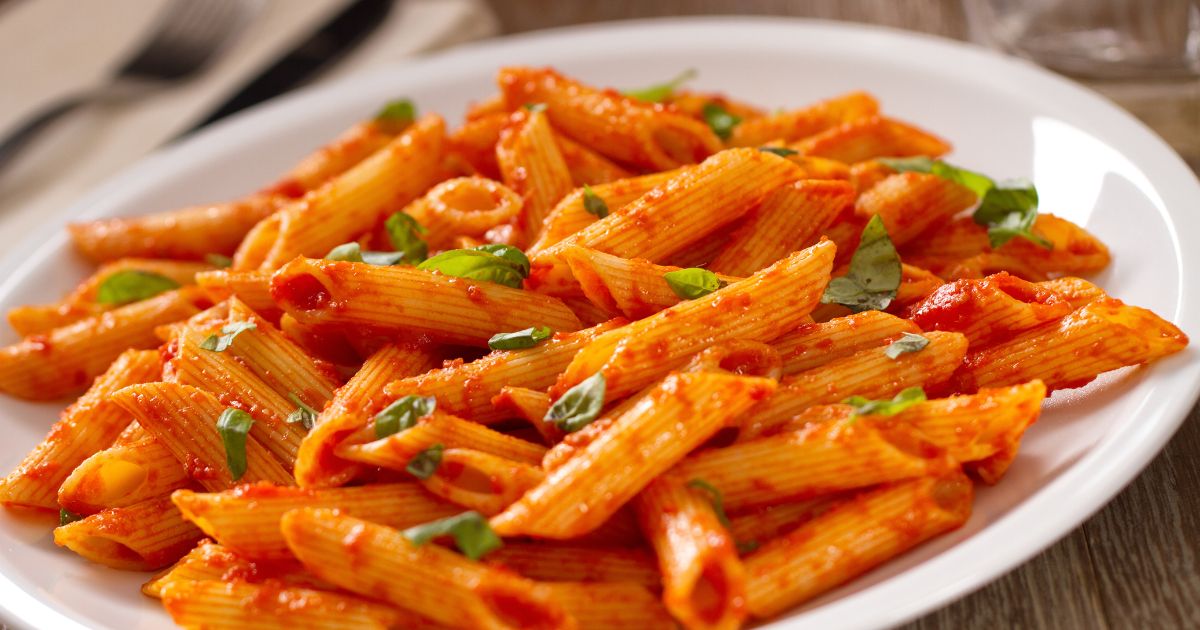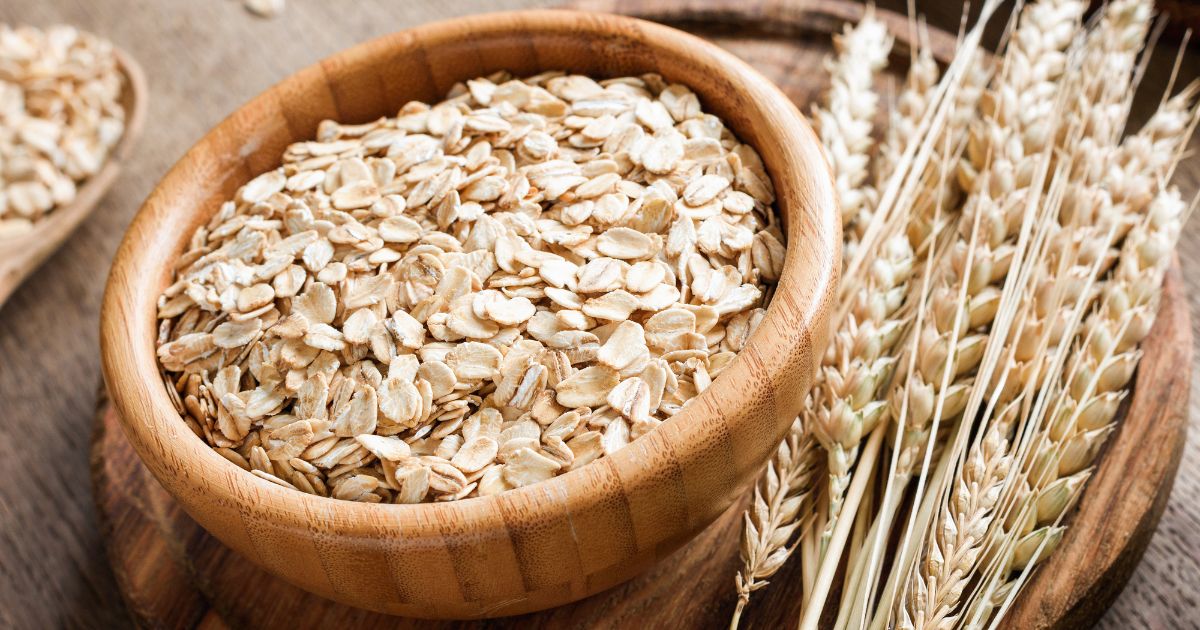Cooking on a flattop grill is a culinary adventure that brings a unique set of challenges and rewards. Whether you’re a seasoned griller or just getting started, understanding the nuances of flattop cooking can elevate your culinary creations. This blog explores 10 tips and tricks to help you master the art of cooking on a flattop grill. From achieving the perfect sear to managing temperature zones, these insights will guide you through the intricacies of flattop grilling, ensuring that every meal is a delicious and memorable experience. Fire up your flattop, grab your favorite ingredients, and embark on a flavorful journey into the world of flattop cooking.
1. Outdoor Grills: Choosing the Right Flattop
When it comes to flattop grilling, the type of grill you choose matters. Outdoor grills equipped with a flattop surface offer a versatile cooking experience. Look for grills with a quality flat griddle, ideally made from materials like stainless steel or cast iron for even heat distribution and durability. Consider the size of the cooking surface, ensuring it meets your culinary needs. Outdoor grills often come with additional features such as side burners, warming racks, and storage space, enhancing their functionality. Additionally, propane and natural gas grills provide the convenience of quick and precise temperature control, while charcoal grills impart a distinct smoky flavor to your dishes. Selecting the right outdoor flattop grill sets the foundation for successful flattop cooking adventures, offering a robust platform to experiment with various recipes and techniques.
2. Essential Tools and Utensils for Flattop Cooking
Equipping yourself with the right tools is essential for a smooth and enjoyable flattop cooking experience. Invest in high-quality utensils such as spatulas, tongs, and grill brushes specifically designed for flattop grilling. A sturdy spatula with a flat edge helps with flipping and chopping ingredients directly on the grill surface. Tongs with a long reach are handy for the precise handling of food items, while a grill brush keeps the surface clean and prevents flavor transfer between different foods. Consider adding a meat thermometer to your toolkit for accurate temperature readings, ensuring that proteins are cooked to perfection. Having a spray bottle filled with water nearby can help manage flare-ups and control the intensity of the heat. With the right tools at your disposal, you’ll navigate flattop cooking with confidence and finesse, creating culinary masterpieces with ease.
3. Temperature Zones: Mastering the Grilling Landscape
Understanding temperature zones on a flattop grill is crucial for achieving different levels of doneness and flavors. Most flattop grills have multiple heat zones, allowing you to create hot, medium, and cool areas. Mastering these zones opens up a world of cooking possibilities. Start by preheating the entire surface and then creating zones by adjusting the burner controls. The hot zone is perfect for searing meats and achieving a caramelized crust, while the cooler zones are ideal for gentle cooking, warming, or toasting buns. Temperature control is key when working with diverse ingredients. For instance, cooking delicate seafood might require a cooler zone, while searing a thick steak benefits from a high-temperature zone. Practicing and becoming familiar with the temperature zones on your flattop grill empowers you to execute a wide range of recipes with precision, ensuring each element of your meal is cooked to perfection.
4. Seasoning the Flattop: Enhancing Flavor and Performance
Seasoning your flattop grill is not just about adding flavor to your food but also about maintaining and enhancing the performance of the cooking surface. Seasoning helps create a non-stick surface, prevents rusting, and imparts a unique taste to your dishes. Begin by cleaning the grill surface thoroughly to remove any residue. Apply a thin layer of high-smoke-point oil, such as vegetable or grapeseed oil, using a cloth or paper towel. Heat the grill until the oil begins to smoke, and then let it cool. Repeat this process several times to build a protective layer on the flattop surface. The seasoned surface not only prevents sticking but also promotes even heating and imparts a desirable smoky flavor to your food. Regularly maintaining and seasoning your flattop grill is essential for its longevity and ensures that each cooking session results in delicious and well-flavored meals.
5. Creative Cooking Techniques: Beyond the Basics
Flattop grills offer a versatile platform for experimenting with various cooking techniques that go beyond the basics of grilling. Embrace techniques like smash burgers, where you press ground meat onto the hot surface, creating a crispy exterior and juicy interior. Try stir-frying vegetables, seafood, or thinly sliced meats for a quick and flavorful meal. Utilize the flattop surface for cooking breakfast favorites like pancakes, eggs, and bacon simultaneously, taking advantage of the large and even cooking area. Additionally, explore the art of teppanyaki-style cooking, where ingredients like thinly sliced meats, vegetables, and rice are cooked with flair right in front of your guests. The flattop grill’s expansive surface allows for multiple cooking activities simultaneously, making it a versatile tool for creating diverse and dynamic meals. Experimenting with creative cooking techniques adds a layer of excitement to your flattop grilling adventures, allowing you to tailor your meals to suit various culinary preferences.
6. Flavorful Marinades and Rubs: Elevating Taste Profiles
One of the keys to exceptional flattop grilling is infusing your ingredients with mouthwatering flavors through marinades and rubs. Marinades, typically consisting of a mix of oil, acid (like vinegar or citrus juice), and various herbs and spices, can tenderize the meat and add depth to its taste. Allow proteins to marinate for an adequate time before grilling to let the flavors penetrate. On the other hand, dry rubs, a blend of herbs, spices, and seasonings applied directly to the surface of the meat, create a delightful crust during grilling. Experiment with different flavor combinations to discover the perfect balance that suits your palate. Understanding the impact of marinating times and the optimal application of dry rubs ensures that your ingredients are not only well-cooked but also bursting with flavor. Whether you’re grilling meats, vegetables, or even fruits, the art of marinating and rubbing adds a layer of complexity to your dishes, turning them into culinary delights.
7. Sides and Accompaniments: Completing the Meal Experience
While the spotlight often falls on the main course, don’t overlook the importance of well-crafted sides and accompaniments to elevate the overall meal experience. Utilize the expansive cooking surface of the flattop grill to prepare complementary items simultaneously. Grilled vegetables, tossed in olive oil and seasoned to perfection, make for a vibrant and nutritious side dish. Consider grilling bread or tortillas to accompany your meal, adding a delightful crunch or chewiness. The flattop grill provides the ideal platform for creating grilled side dishes that complement the flavors of your main course. Additionally, explore the world of sauces, dips, and condiments to enhance the overall dining experience. Prepare a zesty chimichurri sauce, a cooling tzatziki, or a smoky barbecue sauce to drizzle or dip. These flavorful additions not only contribute to the sensory appeal of your meal but also showcase your culinary prowess. By paying attention to the details of sides and accompaniments, you transform your flattop grilling session into a complete and satisfying culinary adventure.
8. Cleaning and Maintenance: Preserving Your Flattop Investment
To ensure the longevity and optimal performance of your flattop grill, proper cleaning and maintenance are essential. After each grilling session, while the surface is still warm, use a grill brush or scraper to remove any food residue and excess grease. Wipe the surface with a damp cloth or paper towel to further clean and cool it down. For stubborn residues, consider using a mixture of water and mild detergent. However, avoid using harsh chemicals that could damage the grill’s surface. Regularly check and clean the grease trap or drip tray to prevent flare-ups and maintain a clean cooking environment. If your flattop grill has a removable griddle plate, follow the manufacturer’s instructions for proper cleaning and storage. Periodically, perform a deep clean by heating the grill to a high temperature, scraping off any residue, and applying a thin layer of oil to season the surface. By incorporating a consistent cleaning routine, you not only preserve the integrity of your flattop grill but also ensure that each grilling session starts with a clean slate.
9. Timing and Coordination: Achieving Culinary Harmony
Successful flattop grilling involves precise timing and coordination, especially when preparing multiple components for a single meal. Different ingredients require varying cooking times, so strategize and organize your cooking sequence accordingly. Start with items that take longer to cook, such as thick cuts of meat, and gradually add quicker-cooking elements like vegetables or seafood. Utilize the temperature zones on the flattop to create a harmonious cooking environment, ensuring that each ingredient is cooked to perfection. To further streamline the process, pre-chop and pre-marinate ingredients, and have all necessary tools and utensils within reach. This not only enhances efficiency but also allows you to focus on the art of cooking rather than scrambling for ingredients. Developing a keen sense of timing and coordination transforms your flattop grilling sessions into a well-orchestrated culinary performance, resulting in a perfectly balanced and delectable meal.
10. Creative Presentation: Serving With Style
The presentation of your flattop-grilled dishes adds the finishing touch to your culinary creations. Elevate the dining experience by paying attention to the visual appeal of your plates. Arrange grilled items with an artistic flair, creating visually appealing patterns or stacks. Consider using fresh herbs, edible flowers, or garnishes to add pops of color and freshness to your dishes. Experiment with different serving platters and plates to enhance the overall aesthetic. Utilize sauces or drizzles not only for flavor but also as artistic elements on the plate. Plate the food thoughtfully, considering balance and symmetry. The visual appeal of a well-presented dish not only enhances the dining experience but also showcases your commitment to culinary excellence. By incorporating creative presentation techniques, you turn your flattop-grilled meals into an immersive and visually delightful culinary experience that is sure to impress your guests.
Conclusion
Cooking on a flattop grill is a dynamic and rewarding experience that opens the door to a multitude of culinary possibilities. Whether you’re using an outdoor grill, mastering temperature zones, selecting the right tools, seasoning the flattop, or exploring creative cooking techniques, these 10 tips and tricks serve as your guide to achieving flavorful and perfectly cooked dishes. The world of flattop cooking is yours to explore. FLattop grilling offers a canvas for culinary creativity and the opportunity to savor the rich and savory results of your efforts. Fire up your flattop grill, embrace these techniques, and embark on a journey of delicious discoveries with flattop cooking.




